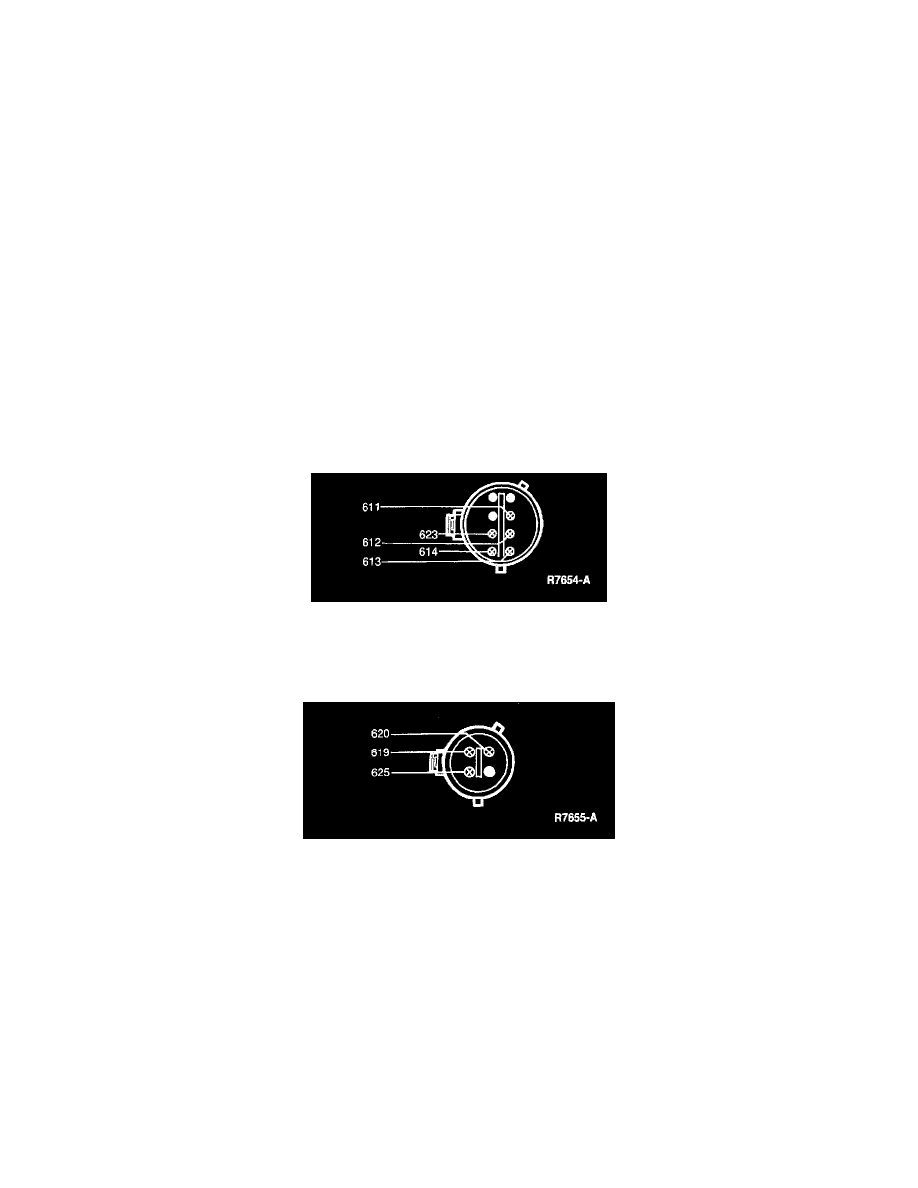Taurus V6-182 3.0L FF (1995)

The air bag must be packaged and shipped according to the U.S. Department of Transportation regulations. Retain packaging used for replacement air
bag including the labeling. Do not deploy air bag. Properly package the module in the original service replacement carton and securely tape shut, with
the Flammable Solid label and shipping exemption affixed to it.
Scrapped Vehicle
Some vehicles that are damaged or inoperable to the point that service cannot be made may contain an undeployed air bag. This condition could occur by
side or rear impact, rollover or if the vehicle is simply past its useful lifetime. The air bag should be deployed using procedure 1 or 2 prior to scrapping
vehicle.
Air Bag Disposal Procedure 1 - Electronic Deployment with Wiring Intact
This procedure is to be used if a vehicle with a live air bag inflator is to be scrapped. Scrapping a vehicle may be required due to severe damage in a
non-air bag deployable collision or at the end of the vehicle's useful life. This procedure assumes that the air bag wiring remains intact: that is, no
diagnostic trouble codes are indicated by the air bag warning indicator, the system proves out correctly and the vehicle's battery is still in place (or one
has been provided). This procedure is to be performed outdoors and away from other personnel, since the deploying air bag makes a loud report upon
actuation.
1. Check and clear the front seat of all loose objects.
2. Do not permit any occupants to remain inside the vehicle.
3. Open the hood and check for an operational vehicle battery. If no battery is found, supply one and connect it in the usual manner.
4. Turn the ignition switch to RUN and observe the air bag warning indicator. If the indicator illuminates for six seconds and then stops, the system
is intact and may be deployed. Continue with Procedure 1. If a series of diagnostic trouble codes appear, go to Procedure 2 to deploy the unit.
5. Turn ignition switch to OFF.
6. Locate the LH kick panel safing rear air bag sensor and bracket in the LH cowl side panel and disconnect.
7. Using a 152 mm (6 inch) length of wire, jump circuits 611 (W/0) and 614 (GY/0) at harness connector.
8. Locate center radiator primary crash front air bag sensor and bracket mounted on top center radiator support and disconnect.
WARNING: MAKE SURE NO OCCUPANTS ARE IN THE VEHICLE.
9. Jump circuit 619 (PK/W) to ground using a 152 mm (6 inch) length of wire.
10. If successful, a loud report will be heard and the bag material will be visible in the center of the steering wheel. Allow at least 10 minutes before
approaching the air bag to allow for cooling. If air bags do not deploy, go to Procedure 2.
The air bags are now inoperative and the vehicle may be scrapped in accordance with scrap metal procedures.
Procedure 2 - Remote Deployment of Air Bags
This procedure is to be used in the event that a vehicle with a live air bag is to be scrapped, but the vehicle does not contain an intact wiring harness or
certain system components are inoperative. This procedure can also be used if Procedure 1 was unsuccessful.
WARNING: REMOTE DEPLOYMENT IS TO BE PERFORMED OUTDOORS WITH ALL PERSONNEL AT LEAST 6 M (20 FEET)
AWAY TO ENSURE PERSONAL SAFETY AND DUE TO THE LOUD REPORT WHICH OCCURS WHEN AN AIR BAG IS DEPLOYED.
1. Remove the driver side air bag module and passenger side air bag module from the vehicle.
2. Cut the two air bag connector wires and strip 25 mm (1 inch) of insulation from the ends. Obtain two wires at least 6 m (20 feet) long. Connect
one end of each wire to each of the air bag module wires.
